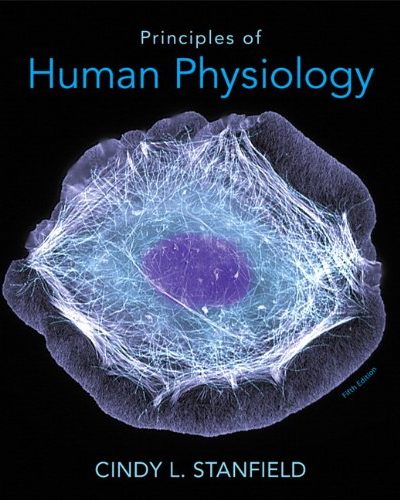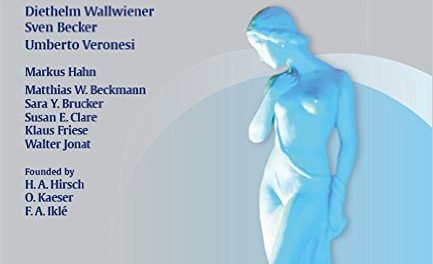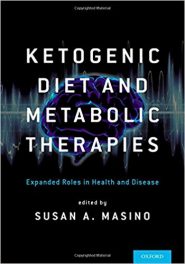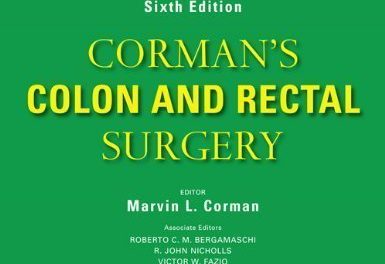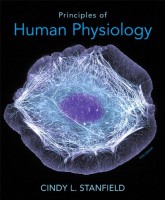 Author: Cindy L. Stanfield, BS, PhD
Author: Cindy L. Stanfield, BS, PhD
Publisher: Pearson – 782 pages
Book Review by: Nano Khilnani
This textbook is designed to enable you the student to understand the core concepts of human physiology and to learn, understand and apply key physiological processes. The author Cindy Stanfield also planned for the book to provide to you “a solid, comprehensive, and current overview of the field.”
Stanfield also indicates in the Preface that some of the goals for this fifth edition are to provide:
- A direct and precise writing style
- A clear and illuminating art program designed to maximize student learning
- Pedagogical features that stimulate users’ interest, help readers think about physiological processes in an integrated way, and reinforce the most important concepts
- The author stresses the most critical change in this edition, and we quote her so you the user will understand its importance:
- “The most wide-ranging advancement in the fifth edition is the addition of Mastering A&P, the most effective and widely used online .tutorial, homework, and assessment platform and system for the sciences. This online tool utilizes the most current resources, including chapter quizzes, self-paced tutorials, practice tests, guided animations, interactive physiological processes, and expansive laboratory simulations.”
- So to derive the most from this book, we request that you also procure the Mastering A&P’s online tutorial program and get access to online resources.
The text and the online program work together to help you review, study, and master essential concepts in human physiology.
For example:
- New Mastering A&P (MAP) Icons – are placed throughout the text and direct you to related online content like the A&PFlix animations and Interactive Physiology tutorials to review the most difficult topics in the course.
- New Critical Thinking Questions – have been added to Clinical Connections boxes, which link to assignable coaching activities in Mastering A&P.
- Mastering A&P for Principles of Human Physiology Fifth Edition – also includes assignable Chapter Test Questions, Reading Quiz Questions, Clinical Connections Coaching Activities, Interactive Flowchart Coaching Activities, A&P case studies, art labeling activities, test bank questions, PhysioEx lab activities, and more.
The coverage of this textbook is quite extensive. It consists of: 24 chapters:
- Introduction to Physiology
- The Cell Structure and Function
- Cell Metabolism
- Cell Membrane Transport
- Chemical Messengers
- The Endocrine System: Endocrine Glands and Hormone Actions
- Nerve Cells and Electrical Signaling
- Synaptic Transmissions
- The Nervous System: Central Nervous System
- The Nervous System: Sensory Systems
- The Nervous System: Autonomic and Motor Systems
- Muscle Physiology
- The Cardiovascular System: Cardiac Function
- The Cardiovascular System: Blood, Blood Flow, and Blood Pressure
- The Cardiovascular System: Blood
- The Respiratory System: Pulmonary Ventilation
- The Respiratory System: Gas Exchange and Regulation of Breathing
- The Urinary System: Renal Function
- The Urinary System: Fluid and Electrolyte Balance
- The Gastrointestinal System
- The Endocrine System: Regulation of Energy Metabolism and Growth
- The Reproductive System
- The Immune System
- Diabetes Mellitus
Outstanding presentation of materials is a hallmark of this book. Full-color graphics in the form of charts, drawings, figures, tables abound, and are spread throughout this book, that make absorption of concepts and processes easier.
Cindy L. Stanfield earned a B.S. degree and a Ph.D. in physiology at the University of California at Davis. Her exposure to neurophysiology research as an undergraduate sparked her interest in pursuing a Ph.D. As a graduate student, Stanfield studied the role of neuropeptides in pain modulation and taught several physiology laboratory courses, which led to her interest in teaching.
She currently teaches human physiology and neuroscience lecture courses and a lecture/discussion course in issues in biomedical sciences at the University of South Alabama. Cindy recently retired her research responsibilities to take on advising pre-health students.
She currently serves as the National President of Alpha Epsilon Delta (AED), the national Prehealth Honor Society. Cindy received the College of Allied Health Professions Excellence in Service Award in 2003, and the University of South Alabama Alumni Association Excellence in Teaching Award in 2004.
She is an active member of several professional organizations including the Society for Neuroscience, the International Association for the Study of Pain, the American Pain Society, and the National Association of Advisors for the Health Professions. She lives in Mobile, Alabama, with her husband, Jim, and their many cats and dogs.

